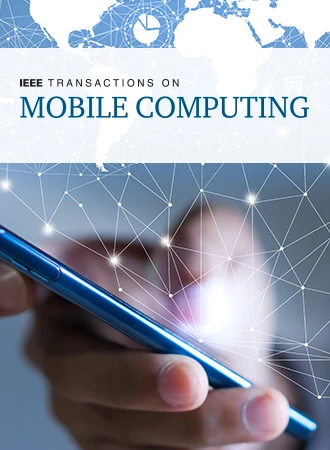Tackling Resource Allocation for Decentralized Federated Learning: A GNN-Based Approach
IF 9.2
2区 计算机科学
Q1 COMPUTER SCIENCE, INFORMATION SYSTEMS
引用次数: 0
Abstract
Decentralized federated learning (DFL) enables clients to train a neural network model in a device-to-device (D2D) manner without central coordination. In practical systems, DFL faces challenges due to dynamic topology changes, time-varying channel conditions, and limited computational capability of the clients. These factors can affect the learning performance and efficiency of DFL. To address the aforementioned challenges, in this paper, we propose a graph neural network (GNN)–based algorithm to minimize the total delay and energy consumption on training and improve the learning performance of DFL in D2D wireless networks. In our proposed GNN, a multi-head graph attention mechanism is used to capture different features of clients and wireless channels. We design a neighbor selection module which enables each client to select a subset of its neighbors for the participation of model aggregation. We develop a decoder that enables each client to determine its transmit power and computational resource. Experimental results show that our proposed algorithm achieves a lower total delay and energy consumption on training when compared with five baseline schemes. Furthermore, by properly selecting a subset of neighbors for each client, our proposed algorithm achieves similar testing accuracy to the full participation scheme.解决分散联邦学习的资源分配:一种基于gnn的方法
分散式联邦学习(DFL)使客户能够在没有中央协调的情况下以设备到设备(D2D)的方式训练神经网络模型。在实际系统中,由于动态拓扑变化、时变信道条件和客户端有限的计算能力,DFL面临着挑战。这些因素都会影响外语的学习效果和学习效率。为了解决上述挑战,本文提出了一种基于图神经网络(GNN)的算法,以最大限度地减少训练的总延迟和能量消耗,提高D2D无线网络中DFL的学习性能。在我们提出的GNN中,使用多头图注意机制来捕获客户端和无线信道的不同特征。我们设计了一个邻居选择模块,使每个客户端能够选择其邻居的一个子集来参与模型聚合。我们开发了一种解码器,使每个客户端能够确定其传输功率和计算资源。实验结果表明,与5种基准方案相比,本文提出的算法具有较低的训练总延迟和能量消耗。此外,通过为每个客户端选择适当的邻居子集,我们提出的算法可以达到与完全参与方案相似的测试精度。
本文章由计算机程序翻译,如有差异,请以英文原文为准。
求助全文
约1分钟内获得全文
求助全文
来源期刊
CiteScore
12.90
自引率
2.50%
发文量
403
审稿时长
6.6 months
期刊介绍:
IEEE Transactions on Mobile Computing addresses key technical issues related to various aspects of mobile computing. This includes (a) architectures, (b) support services, (c) algorithm/protocol design and analysis, (d) mobile environments, (e) mobile communication systems, (f) applications, and (g) emerging technologies. Topics of interest span a wide range, covering aspects like mobile networks and hosts, mobility management, multimedia, operating system support, power management, online and mobile environments, security, scalability, reliability, and emerging technologies such as wearable computers, body area networks, and wireless sensor networks. The journal serves as a comprehensive platform for advancements in mobile computing research.

 求助内容:
求助内容: 应助结果提醒方式:
应助结果提醒方式:


